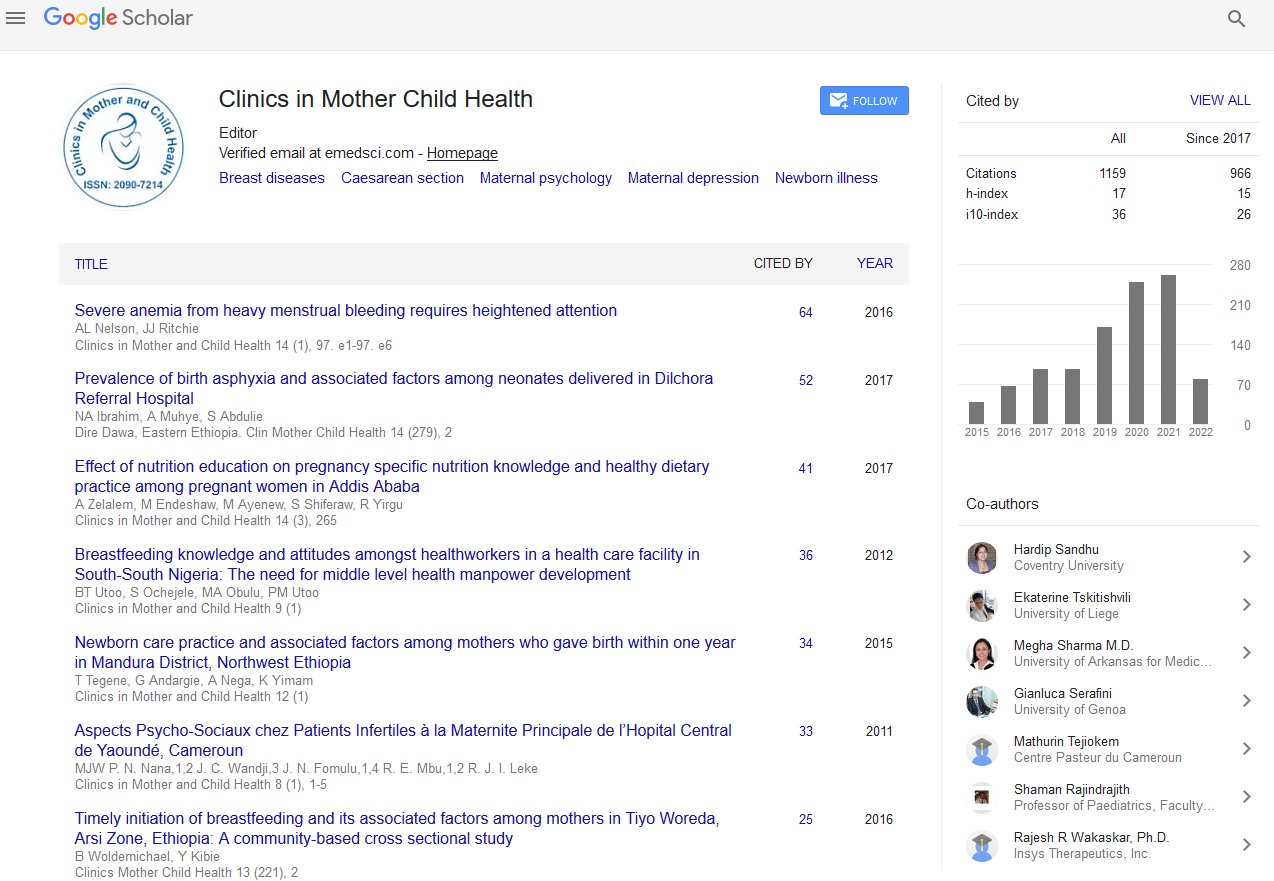Indexed In
- Genamics JournalSeek
- RefSeek
- Hamdard University
- EBSCO A-Z
- Publons
- Geneva Foundation for Medical Education and Research
- Euro Pub
- Google Scholar
Useful Links
Share This Page
Journal Flyer

Open Access Journals
- Agri and Aquaculture
- Biochemistry
- Bioinformatics & Systems Biology
- Business & Management
- Chemistry
- Clinical Sciences
- Engineering
- Food & Nutrition
- General Science
- Genetics & Molecular Biology
- Immunology & Microbiology
- Medical Sciences
- Neuroscience & Psychology
- Nursing & Health Care
- Pharmaceutical Sciences
Abstract
Congenital Cyanogenic Heart Disease in Children: About 420 Cases in Africa
Amadou Lamine Fall, Djibril Boiro, Indou Deme Ly and Amadou Sow*
Congenital Cyanogenic Heart Diseases (CCHD) is a malformation of the heart and large vessels characterized by an oxygen desaturation in the arterial blood, responsible for cyanosis. The general objective was to study the profile of CCHD in Senegalese hospitals. This is a retrospective study carried out over a period of 8 years (January 1, 2010 - December 31, 2017) and including all children aged 0 to 16 years followed for a CCHD. The hospital prevalence was 0.87% for 420 cases collected. The sex ratio was 1.44 and the average age at diagnosis was 16 months. First degree parental consanguinity was noted in 36 cases (30.78%). The main reasons for consultation were breathing difficulty in 242 cases (57.62%) and fever in 136 patients (32.36%). Apart from cyanosis, the clinical signs were dominated by the heart murmur in 313 cases (74.7%), tachycardia in 283 cases (67.38%) and digital hippocratism in 162 cases (38.57%). Cardiomegaly was found in 239 patients (83.36%). The main types of CCHD were tetralogy of Fallot and transposition of the large vessels. In biology, 206 patients (49.05%) presented polyglobulia. A complete surgical cure was carried out in 22 patients (5.24%). Complications were anoxic crisis (52 cases) and hemorrhagic syndrome (17 cases). There were 97 deaths (28.28%) during hospitalization. The diagnosis of CCHD is late in our country and surgical management is poor explaining the high mortality.
Published Date: 2021-02-26; Received Date: 2021-02-05


